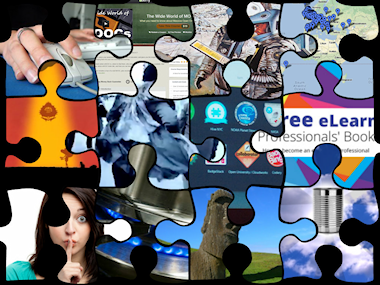There once was a time when I thought Second Life was going to take over the world. Well, the virtual world.
I was so impressed with the technology – and amazed at its availability for free! – that I saw it as an unstoppable force.
Yet more fascinating for me was its implications for education. Web conferencing was starting to become popular around the same time, and while these days Skype and FaceTime are de rigueur, back then webcamming introduced a sorely needed human element to distance learning.
However, I noticed something peculiar with web conferencing. While the webcam presented the human face, the learning experience remained undeniably isolated. We were all together, yet each alone.
Second Life was different. Its animations reproduced not only the full human form, but also the learning environment: chairs, tables, stage, etc. Now (at least visually) we were all together. The irony was that by making the interaction entirely artificial, it made it more real.
Alas, Second Life had an Achilles heel. While it was drop-dead easy to participate as a consumer, it was relatively difficult to participate as a producer.
For a start, if you wanted your own space, you had to buy your own virtual real estate. But worse, it was surprisingly hard to make stuff. I remember trying to build simple objects using the developer tools, but I struggled. So I’d give up, go back to it later when I could steal some time, only to abandon it again. Until I finally gave up for good.
Now I’m a fairly tech savvy kind of guy. While I can’t hack into NASA, I’m confident enough to give any software a go and not be put off by shiny new toys. But I was put off by this. And so too, it would seem, was the rest of the L&D world.
The moral of the story is deeper than the Gartner Hype Cycle. In fact, while we experienced a peak of inflated expectations with Second Life, and then the trough of disillusionment, I don’t think as a profession we ever reached the slope of enlightenment, let alone the plateau of productivity. Sure, some educators such as Sydney Medical School are doing wonderful things on the platform, but that’s hardly universal.
So what happened?
To me it’s simple: Second Life failed to accommodate Average Joe. If Joe wanted to attend a virtual conference or a meetup, he could do so with ease; however, if he wanted to host a virtual conference or create a meetup venue, that was beyond him.
And so Second Life sailed off the edge of the virtual world.
Compare Second Life’s journey to that of other products that have emerged recently. For example, everyone says that Articulate Storyline looks and feels like Microsoft PowerPoint. Well guess what… that’s the point.
Love it or loathe it, PowerPoint is easy to use. So hundreds of millions of people use it.
Articulate’s master stroke was to piggyback the usability of PowerPoint for their own purposes. And the proof of the pudding is in its eating. I am seeing Average Joes everywhere who wouldn’t touch other authoring tools with a 10-foot pole expressing an uncharacteristic willingness to give this one a go. That’s not by accident; it’s by design.
I predict a similar fate for other emerging technologies, be it Tin Can, augmented reality, responsive e-learning, or whatever else lay on the horizon.
Address the Average Joe imperative. Lest your Achilles heel becomes your fatal flaw.





